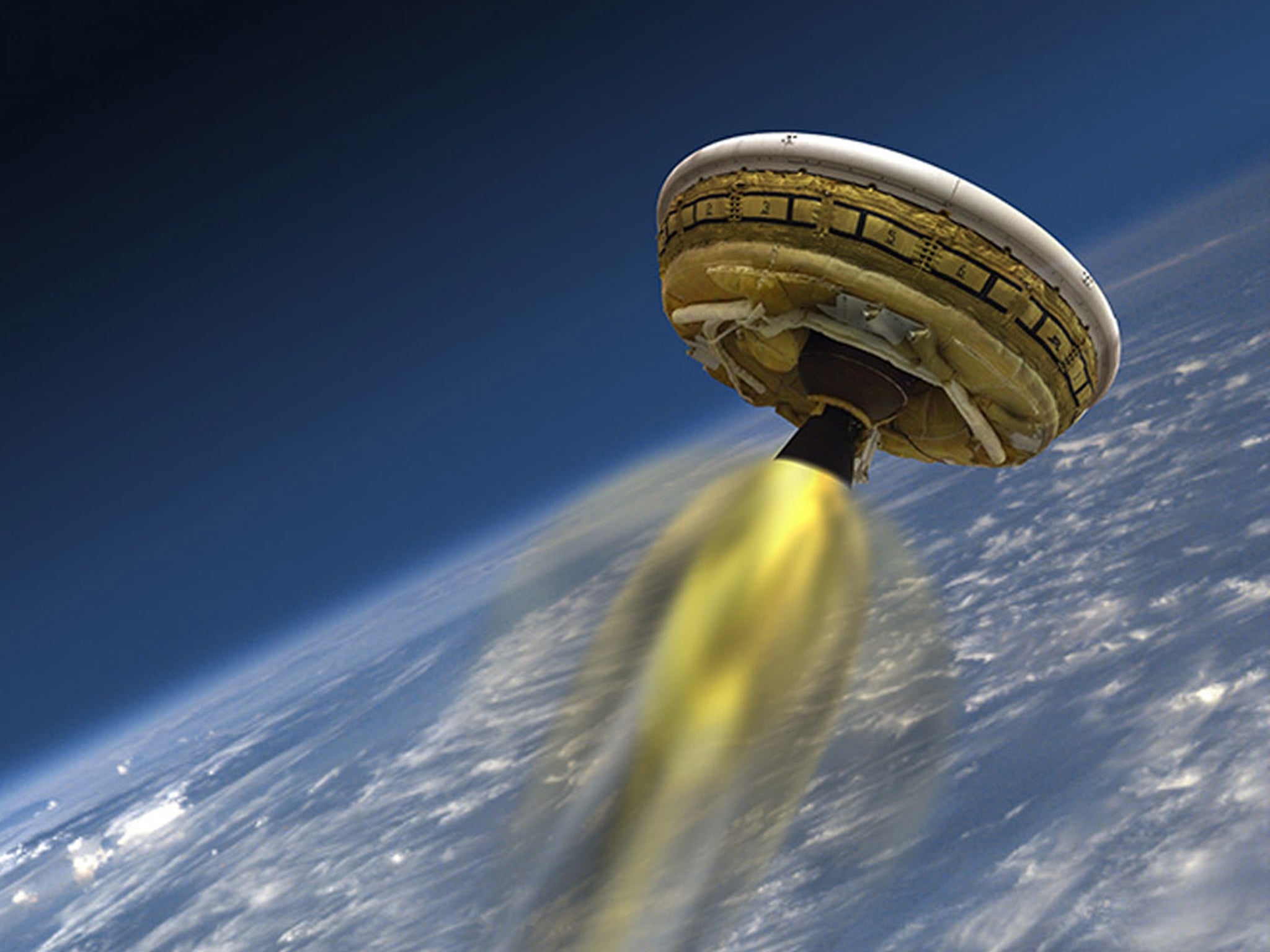Nasa cancels flying saucer launch for third time, but will keep trying
Weather meant that the agency’s attempt to send the ‘Low Density Supersonic Decelerator’ into space from a balloon

Your support helps us to tell the story
From reproductive rights to climate change to Big Tech, The Independent is on the ground when the story is developing. Whether it's investigating the financials of Elon Musk's pro-Trump PAC or producing our latest documentary, 'The A Word', which shines a light on the American women fighting for reproductive rights, we know how important it is to parse out the facts from the messaging.
At such a critical moment in US history, we need reporters on the ground. Your donation allows us to keep sending journalists to speak to both sides of the story.
The Independent is trusted by Americans across the entire political spectrum. And unlike many other quality news outlets, we choose not to lock Americans out of our reporting and analysis with paywalls. We believe quality journalism should be available to everyone, paid for by those who can afford it.
Your support makes all the difference.Nasa has had to cancel its third attempt at launching a rocket-powered flying saucer into space.
The company hopes that it can test out the science fiction-looking ship in advance of using it as a way of landing deliveries on Mars. But the tests have been called off a number of times, most recently because rain showers and wind moved hit the Hawaii launch site.
“A line of rain showers developed overnight moving towards the launch site, which result in unstable wind conditions near the surface that would prevent the launch of the balloon,” Nasa spokesperson Kim Newton said in a post about the called-off mission. Nasa said that it would look to launch it again tomorrow.
When the ship does finally launch, it will be carried up on a giant weather balloon to a spot 120,000 feet above Hawaii. It’ll then be carried up another 180,000 feet, carried up by a rocket booster, mimicking the speed it’ll travel during its descent to Mars.
The landing mechanism will then deploy as the ship comes back down to Earth — first the huge balloon in the flying saucer will deflate, and then a parachute will open out.
If that works, scientists hope to adapt the technology for the future Mars missions. That is important because the thin atmosphere on Mars makes it difficult to get to the ground — there’s less air to slow them down, so too often they crash into the ground and can break.
But the LDSD is built to pick up as much air resistance as it can, with its big round shape — similar to a classic UFO — helping to create drag. The extra parachutes help slow it down even more, hopefully landing equipment or even humans on the red planet.
Join our commenting forum
Join thought-provoking conversations, follow other Independent readers and see their replies
Comments